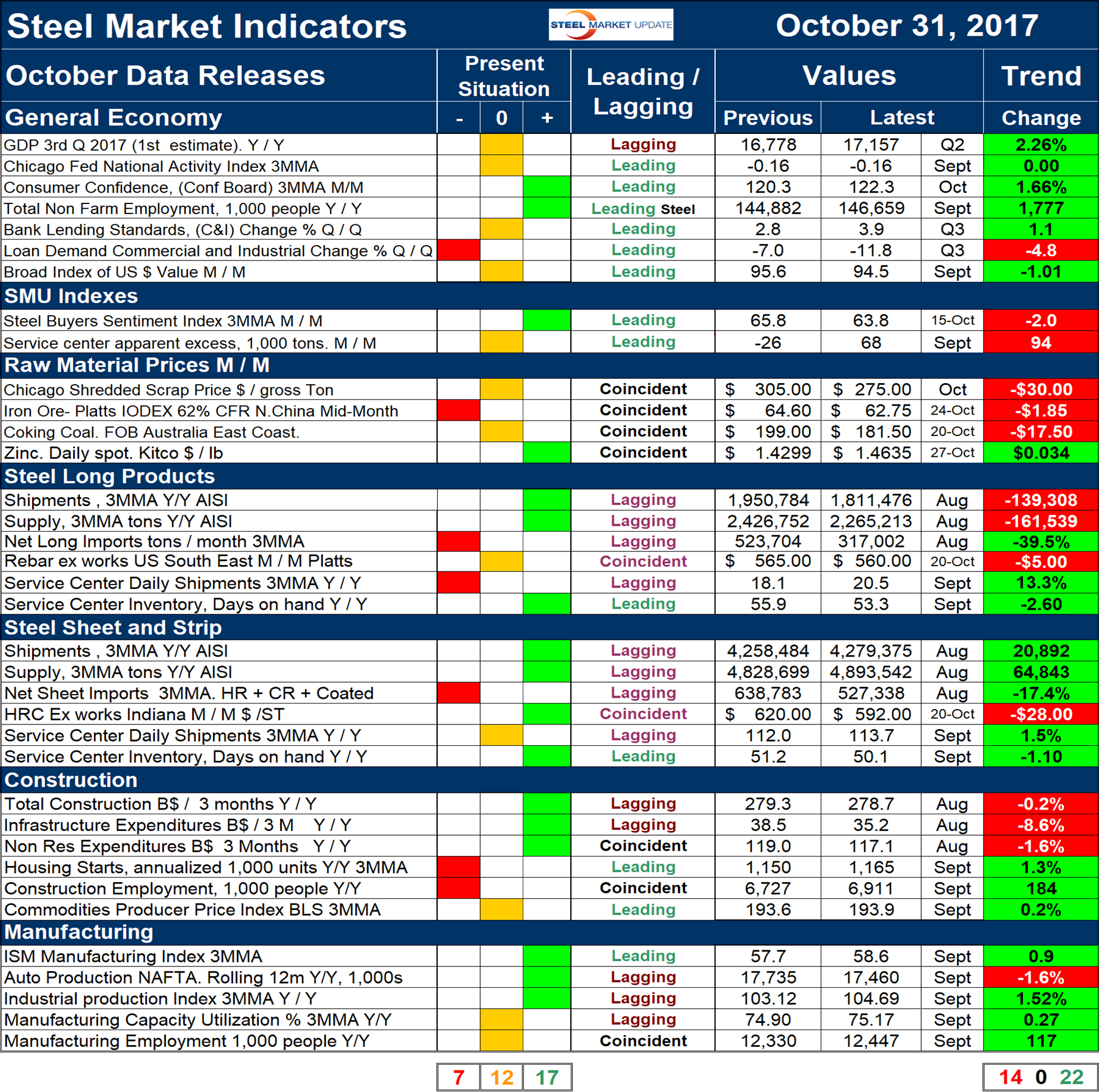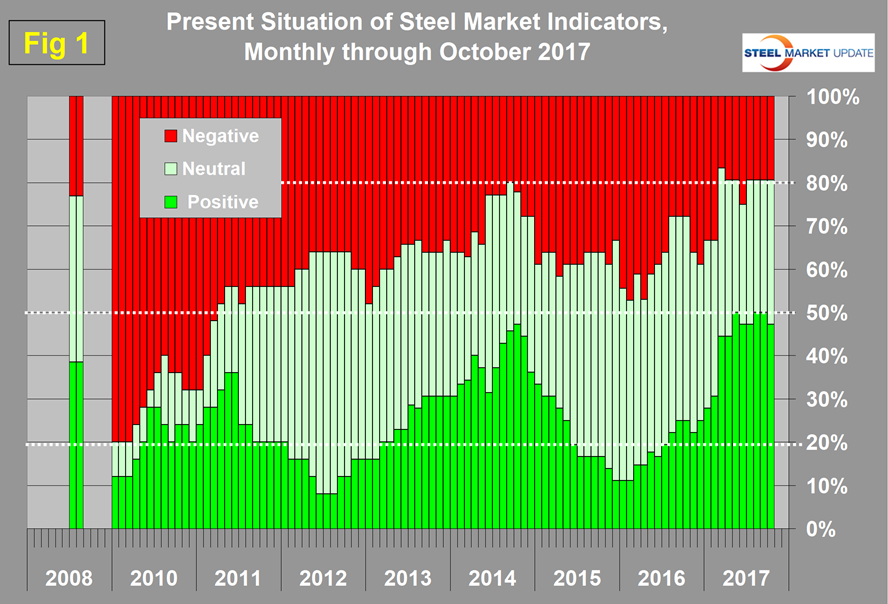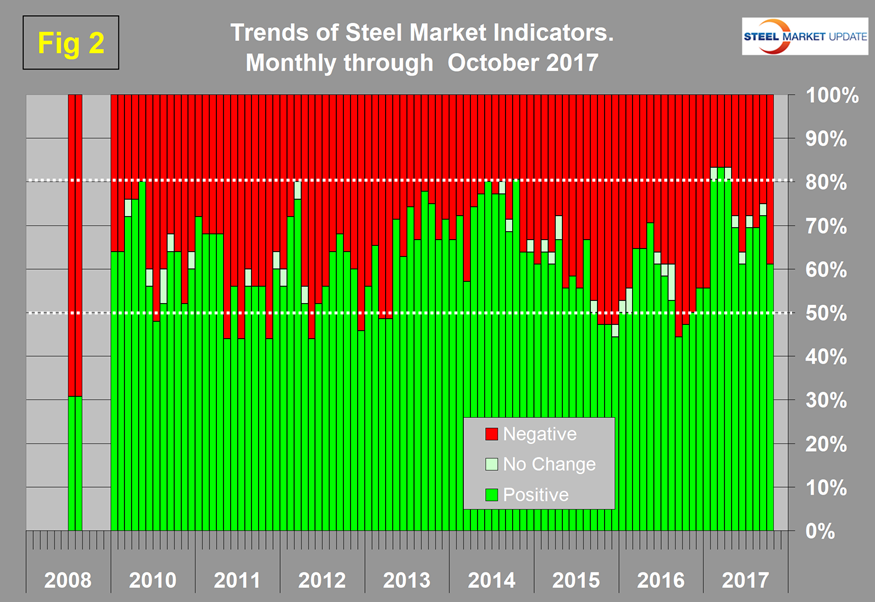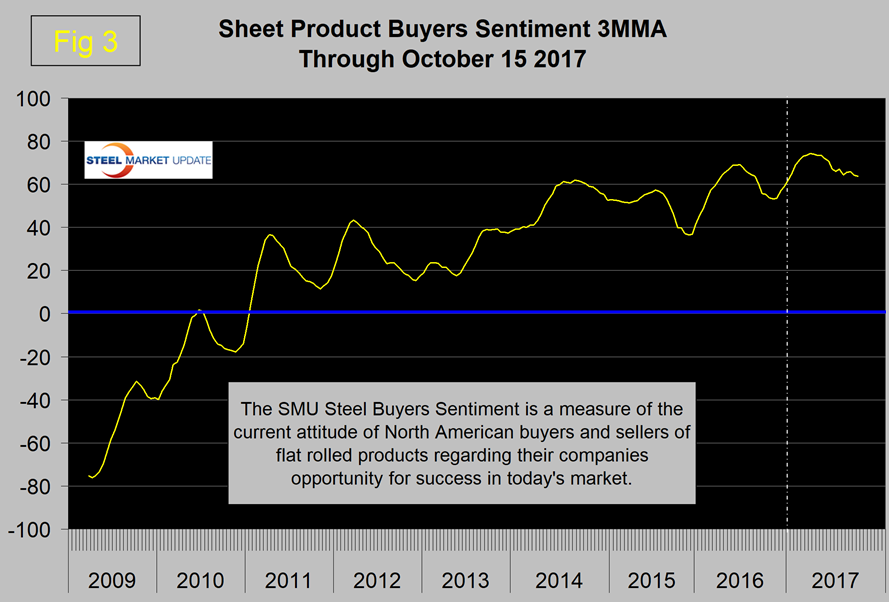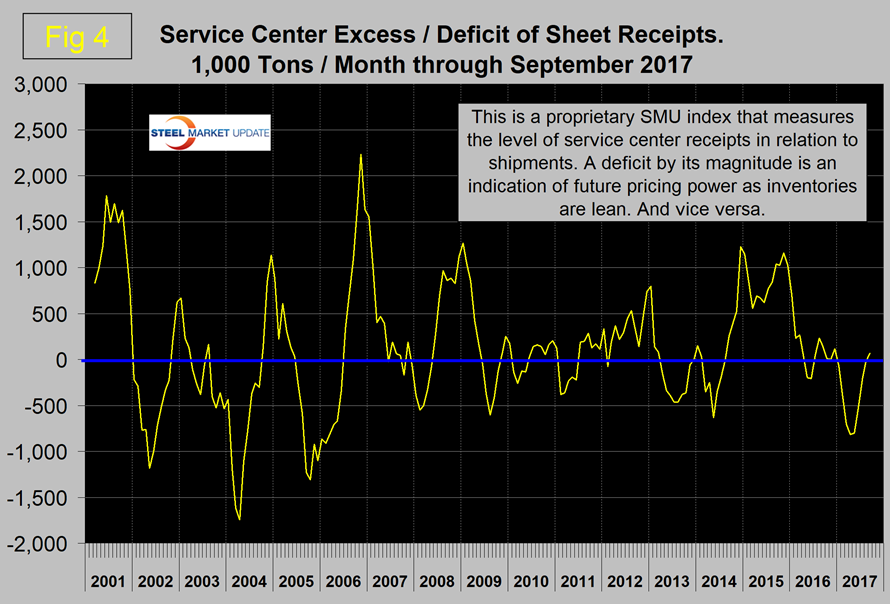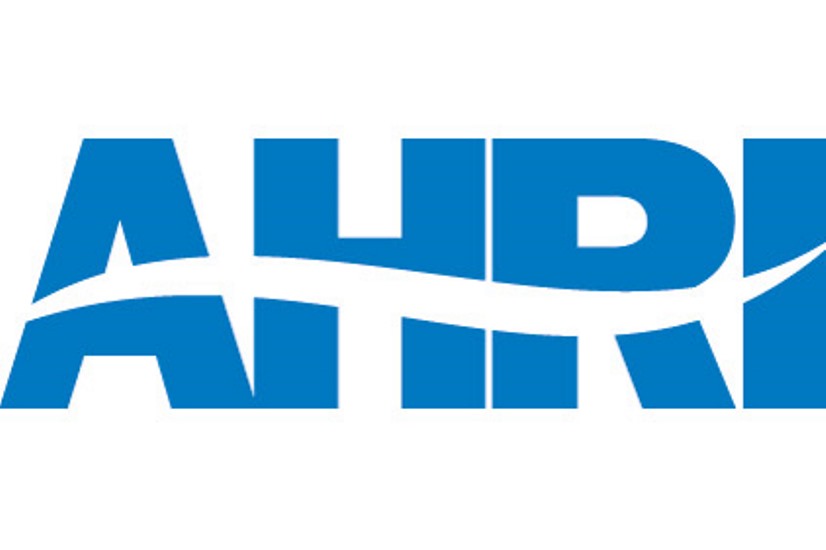Market Data

October 31, 2017
Key Market Indicators: Changing Trends?
Written by Peter Wright
Steel market indicators look good in the October data, but the trends took a turn for the worse.
In the data released in October, our view of the present situation is that 47.2 percent of the 36 indicators are historically positive with only 19 percent negative. The balance are within the band of historically normal. The total of positive and normal has not changed in four months, though there was a decrease of one positive in the October data. Trends deteriorated with 61 percent of the indicators heading in a positive direction; this was down from 72 percent in September and 83 percent in March. Trends lead the present situation by about four months.
![]() An explanation of the Key Indicators concept is given at the end of this piece. This will explain the difference between our view of the present situation, which is subjective, and our analysis of trends, which is based on the latest facts available. The total number of indicators considered in this analysis is 36.
An explanation of the Key Indicators concept is given at the end of this piece. This will explain the difference between our view of the present situation, which is subjective, and our analysis of trends, which is based on the latest facts available. The total number of indicators considered in this analysis is 36.
Please refer to Table 1 for our view of the present situation and the quantitative measure of trends. Readers should regard the color codes in the present situation column as a visual summary of the current market condition. The “Trend” columns of Table 1 are also color coded to give a quick visual appreciation of the market’s direction. All data included in this table was released in October. The month or specific date to which the data refers is shown in the second column from the far right. All data is the latest available as of Oct. 31, 2017.
Present Situation
There was a net decline of one in the number of indicators that we consider to be positive in October, with a net increase of one neutral. We currently view 17 of the 36 indicators as positive, 12 as neutral and 7 as negative. Our intent in using the word neutral is to say that this indicator is considered to be in the mid-range of historical data. Figure 1 shows our monthly assessment of the present situation since January 2010 on a percentage basis.
The number of indicators classified as positive peaked at 47.2 percent in October 2014 and steadily declined to 11.1 percent in the three months through January 2016. Beginning in February 2016, there was a steady increase in the number of positive indicators through May 2017 when a new high of 50.0 percent was reached. In the last six months, three have had a positive level of 50 percent and three have had 47.2 percent. The combination of positive and neutral indicators has been at or above 80 percent for seven of the last eight months. This is the best string of results since we began this analysis in January 2010. In the October data, the only change in the present situation was that we re-classified the SMU indicator of service center inventory surplus from positive to neutral.
Trends
Most values in the trends columns are three-month moving averages (3MMA) to smooth out what can be very erratic monthly data. Trend changes in the individual sectors since the end of August data are described below together with some general comments. (Please note in most cases this is not October data but data that was released in October for previous months.)
In the four months from October 2016 through January 2017, there was a steady improvement in trends. There was a positive surge in February that was sustained in March and April. Since then results have been mixed with October having the highest number of negatives since January. Figure 2 shows the trend of the trends and the pre-recession situation at the far left of the chart.
Our observations about trends in the October data are as follows: Last week, the first estimate of GDP in the third quarter was released and came in at 2.96 percent, down slightly from the 3.03 percent in the third estimate of growth in Q2. This is an annualized change quarter on quarter. Our key indicators chart records year-over-year changes and, by this measure in Q3, the economy grew by 2.26 percent, which was the best result since Q3 2015. In the General Economy section of Table 1, there was one trend reversal when the Chicago Fed National Activity index reversed direction and trended positive. Five of the seven general economy indicators are heading in the right direction. There was one change in the direction of the trends of the SMU proprietary indexes. The steel buyers sentiment reversed direction and trended negative with a decrease from 65.83 (3MMA) in mid-September to 63.8 in mid-October, but is still historically very strong (Figure 3).
Service center excess of sheet products turned negative in January and became increasingly so through April when it reached negative 816,000 tons. Since then the deficit declined to a mere 26,000 tons in August and became a surplus of 68,000 tons in September. This is a proprietary SMU calculation. We regard an inventory deficit to be positive in terms of pricing power, therefore we are presently in a situation with a small surplus and of negotiation neutrality (Figure 4).
In the raw materials section, the prices of all four ingredients were trending positive in August. In September, Chicago shredded was unchanged and the IODEX iron ore index trended down. In October, the prices of scrap, iron ore and coking coal all trended down. The price of zinc continued its upward surge with a price over $1.46/lb. in late October. We regard rising raw materials prices as positive and indicative of a strengthening market. In the long steel products sector, there was one trend reversal when the price of rebar, ex works U.S. South East, reversed direction and declined by $5.00/short ton. The trends for sheet products were unchanged in the October data when five of the six indicators trended positive, an improvement from three positives in the August data. The only negative trend in September and October was a decline in the price of HRC ex works Indiana. Shipments from both mills and service centers increased and net imports declined. In the construction sector, there were three trend reversals. Total construction and nonresidential construction both changed direction and declined on a year-over-year basis. Housing starts, which had declined in August, expanded in September. In the manufacturing sector, all five indicators were trending positive in the September data, but in the October data automobile assemblies in NAFTA declined.
We believe a continued examination of both the present situation and direction is a valuable tool for corporate business planning.
Explanation: The point of this analysis is to give both a quick visual appreciation of the market situation and a detailed description for those who want to dig deeper. It describes where we are now and the direction in which the market is headed, and is designed to describe the situation on a specific date. The chart is stacked vertically to separate the primary indicators of the general economy, of proprietary Steel Market Update indices, of raw material prices, of both sheet and long product market indicators, and finally of construction and manufacturing indicators. The indicators are classified as leading, coincident or lagging as shown in the third column.
Columns in the chart are designed to differentiate between where the market is today and the direction in which it is headed. Our evaluation of the present situation is subjectively based on our opinion of the historical value of each indicator. There is nothing subjective about the trends section, which provides the latest facts available on the date of publication. It is quite possible for the present situation to be predominantly red and trends to be predominantly green or vice versa depending on the overall situation and direction of the market. The present situation is subdivided into, below the historical norm (-) (OK), and above the historical norm (+). The “Values” section of the chart is a quantitative definition of the market’s direction. In most cases values are three- month moving averages to eliminate noise. In cases where seasonality is an issue, the evaluation of market direction is made on a year-over-year comparison to eliminate this effect. Where seasonality is not an issue, concurrent periods are compared. The date of the latest data is identified in the third values column. Values will always be current as of the date of publication. Finally the far right column quantifies the trend as a percentage or numerical change with color code classification to indicate positive or negative direction.



